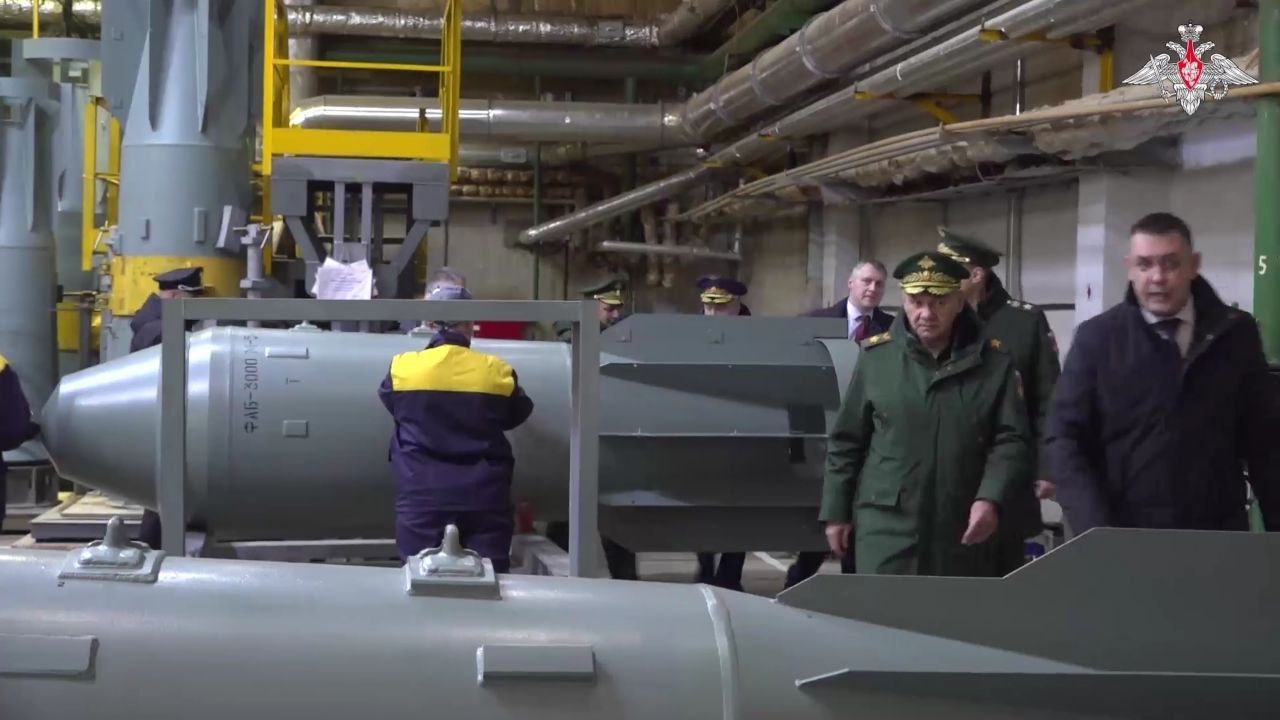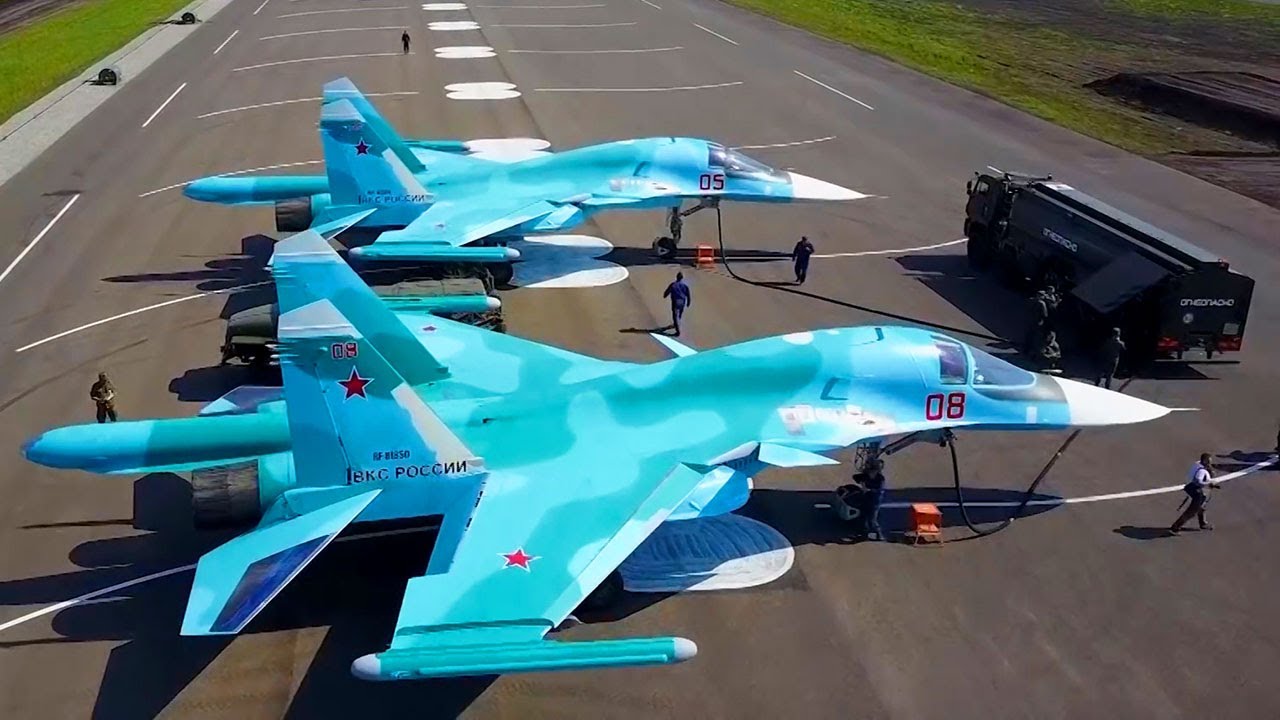Russia has increased production of the FAB series of bombs that have been devastating Ukraine’s frontlines after being converted to guided glide bombs with the Universal Module for Planning Correction (UMPC) kits.
Defense Minister Sergei Shoigu visited one such factory, which displayed fresh stocks of FAB bombs and other ordnance. New measures were announced to hike production capacity and install new facilities.
Dropped from Su-34 Fullback fighter bombers, videos of factories churning out the bombs mean their attacks will only increase, despite the spate of Su-34 losses to Ukrainian air defense fire.
This means the losses have not stemmed the momentum of the Russian Aerospace Force’s (RuAF) battlefield interdiction strikes, which will continue until Moscow captures all the breakaway Russian-speaking regions in Moscow’s east and south under its control.
Factory Cranking Out Ammo, Bombs
A recent press release from the Russian Ministry of Defense (RuMoD) showed the defense minister visiting a factory in the Nizhniy Novgorod region. There, he “inspected the production of air-delivered ordnance, as well as artillery and tank shells of various calibers.”
He was informed how the enterprise has “repeatedly increased the production of FAB-500 aerial bombs, doubled the production of FAB-1500 aerial bombs, and since February of this year, mass production of FAB-3000 aerial bombs has been established.”
FAB-500s have been the leading drop bombs to be converted into UMPC-guided glide bombs. The heavier 1500 and 3000 bombs will cause even greater damage, cover larger areas with the blast, and offer bigger stopping power. It is likely these, too, will be dropped from the Su-34 Fullback.
The “enterprise” has clocked a “five-fold” increase in the production of “modern artillery and aviation weaponry” by “reactivating production capabilities, technical re-equipment, and modernization of production lines for the manufacture of projectiles by modern high-tech equipment.”
Since 2022, the plant has been reconstructed and modernized, and more than 45,000 square meters of production space have been put into service.
The staff works “around the clock on a three-shift working schedule,” with the number of employees increasing by more than 1,100 people since 2022. The company has also inducted “new equipment at the ammunition manufacturing workshop for 122-mm and 152-mm artillery system shells.”

“When it comes to the production of artillery ammunition, the volume of artillery ammunition components has been increased by almost 22-fold. 75 percent of military ammunition components are recovered, which allows us to maintain a sufficient level of projectile supply to the special military operation zone. The tasks we set a year ago have been accomplished. New facilities have been built, and they work at full capacity,” said Sergei Shoigu.
Su-34s Still Wrecking Havoc With FAB-UMPC Strikes
The last two publicity videos released by the RuMoD showing the Su-34s in action with the FAB-500-UMPC munitions were on March 18 and March 22. In the former, the video clearly shows the four bombs suspended on the middle and inner pylons of the Su-34 (two on each wing).
The plane releases all the bombs, whose wings are seen popping out sideways. The RuMoD said this was a strike in the “South Donetsk direction” at “enemy command post and manpower” targets. “To eliminate the target, the pilots deployed FAB-500 unguided aerial bombs with a universal planning and correction module.”
The March 22 strike was also near South Donetsk, where the Su-34 and FAB500-UMPC munitions were launched at targets of the same nature. This time, however, a video from presumably an overhead drone shows two of the bombs hitting the targets.
This means that UAVs are a key component in the ‘sensor-to-shooter kill chain’ for target identification and tracking in Su-34 bombing strikes.

The glide bombs are particularly hard to intercept since they have no jet, rocket propulsion, or electromagnetic emission for infrared or radio frequency or radar seekers of anti-air missiles to lock on to.
Furthermore, the UMPC kits allow the bombs to be dropped from a distance of 70 km from the frontline, making it even more difficult for Ukrainian air defense missile crews to target the bombs or the Su-34s.
According to the Institute for the Study of War (ISW), an FAB-500 “holds an explosive weight of 150 kilograms, has a damage radius of 250 meters, and can destroy headquarters, warehouses, and concrete and reinforced concrete objects.”
Russia Recently Lost A Lot Of Su-34s
Late in February, the Ukrainian Air Force claimed to have downed a Su-34, which, if true, would bring the total number of Russian jets being shot down until February 21 to seven. According to UAF commander Lieutenant General Mykola Oleschuk, before that date, his forces had destroyed four Russian aircraft, including three Su-34s and one Su-35.
Following that, another announcement noted that two more fighters – a Su-34 and a Su-35S – were shot down on February 19, with another Su-34 shot down on February 20-21, bringing the total number of Russian jets shot down to seven.
- The author can be reached at satamp@gmail.com
- Follow EurAsian Times on Google News




